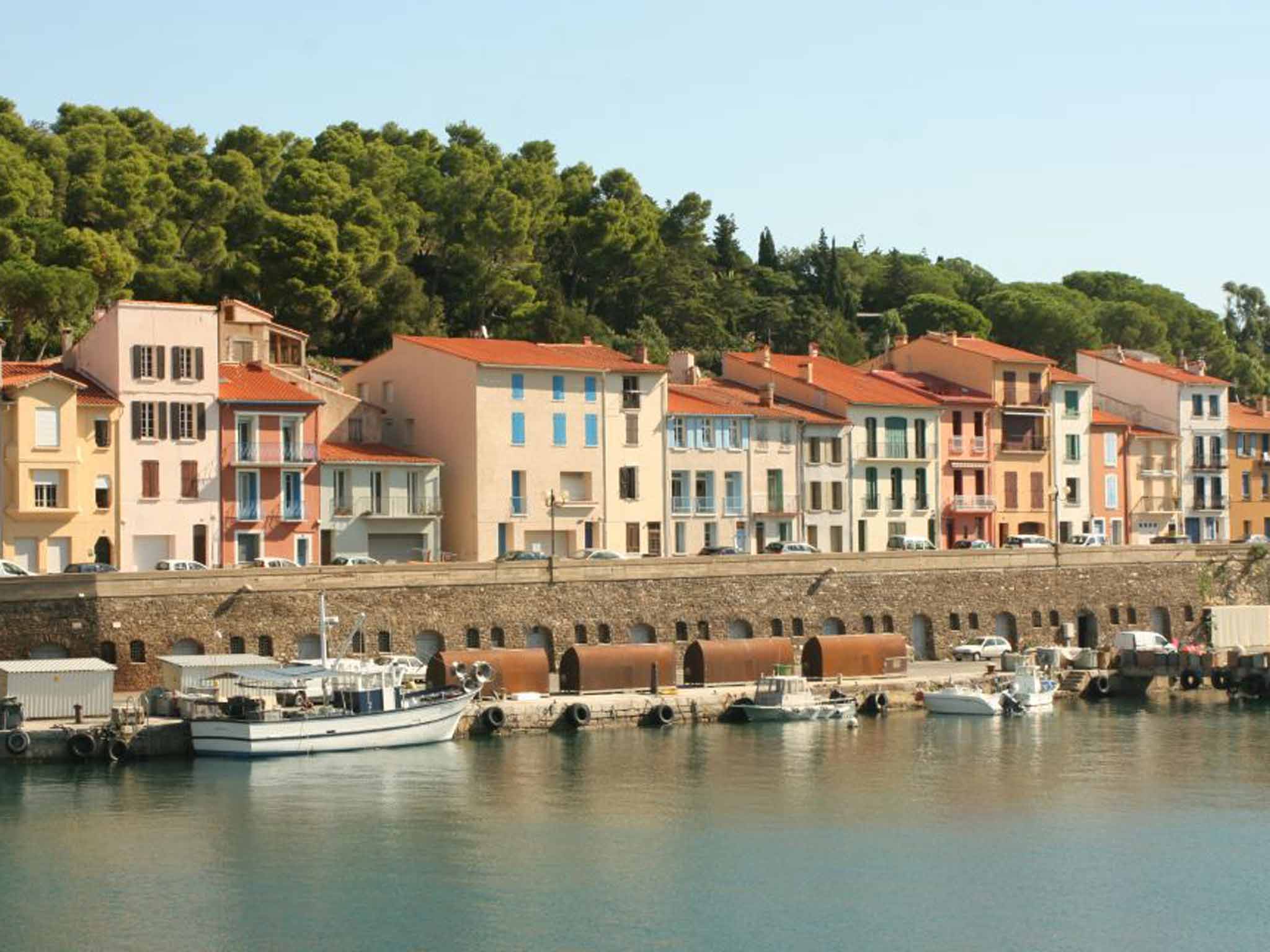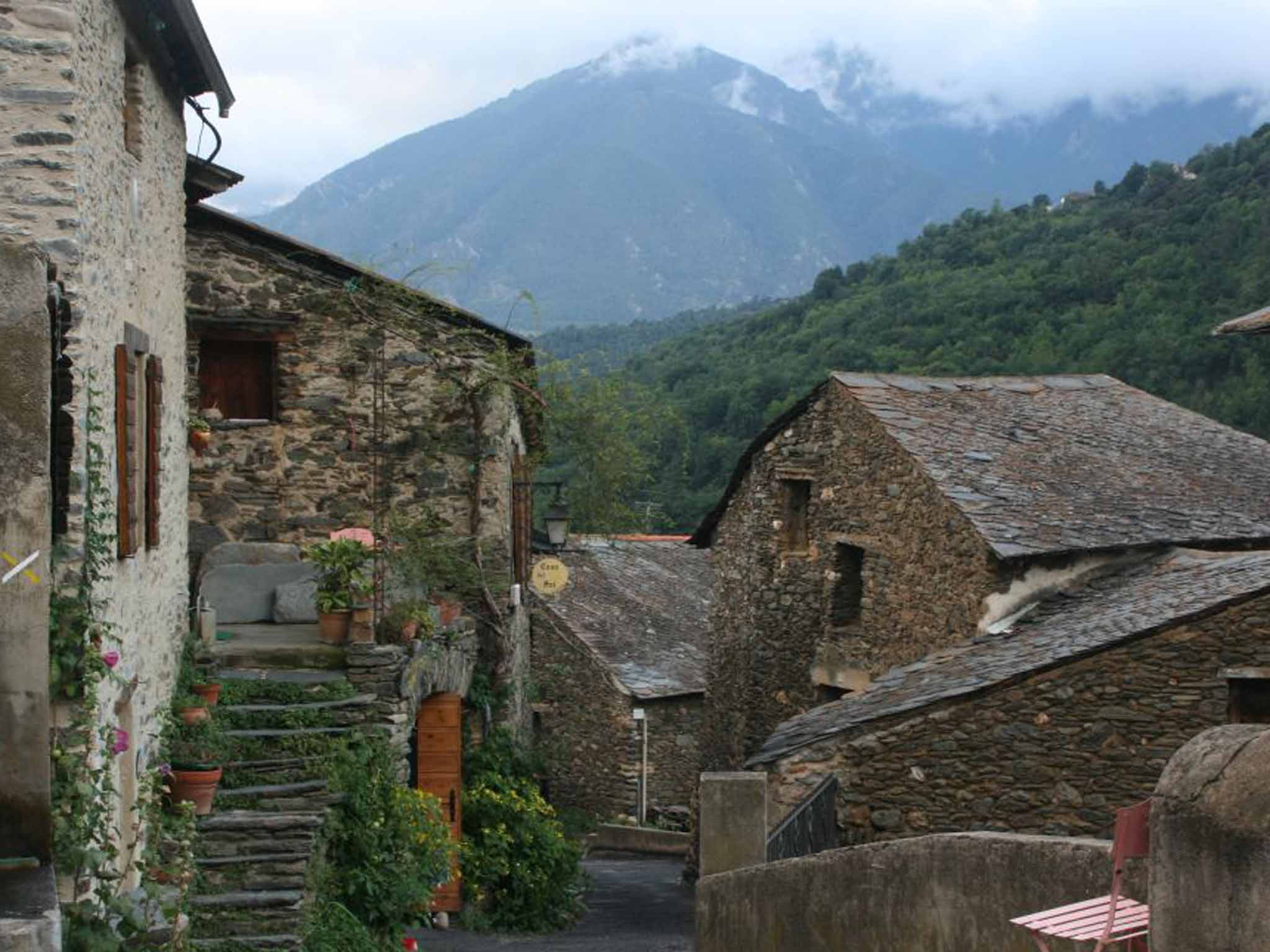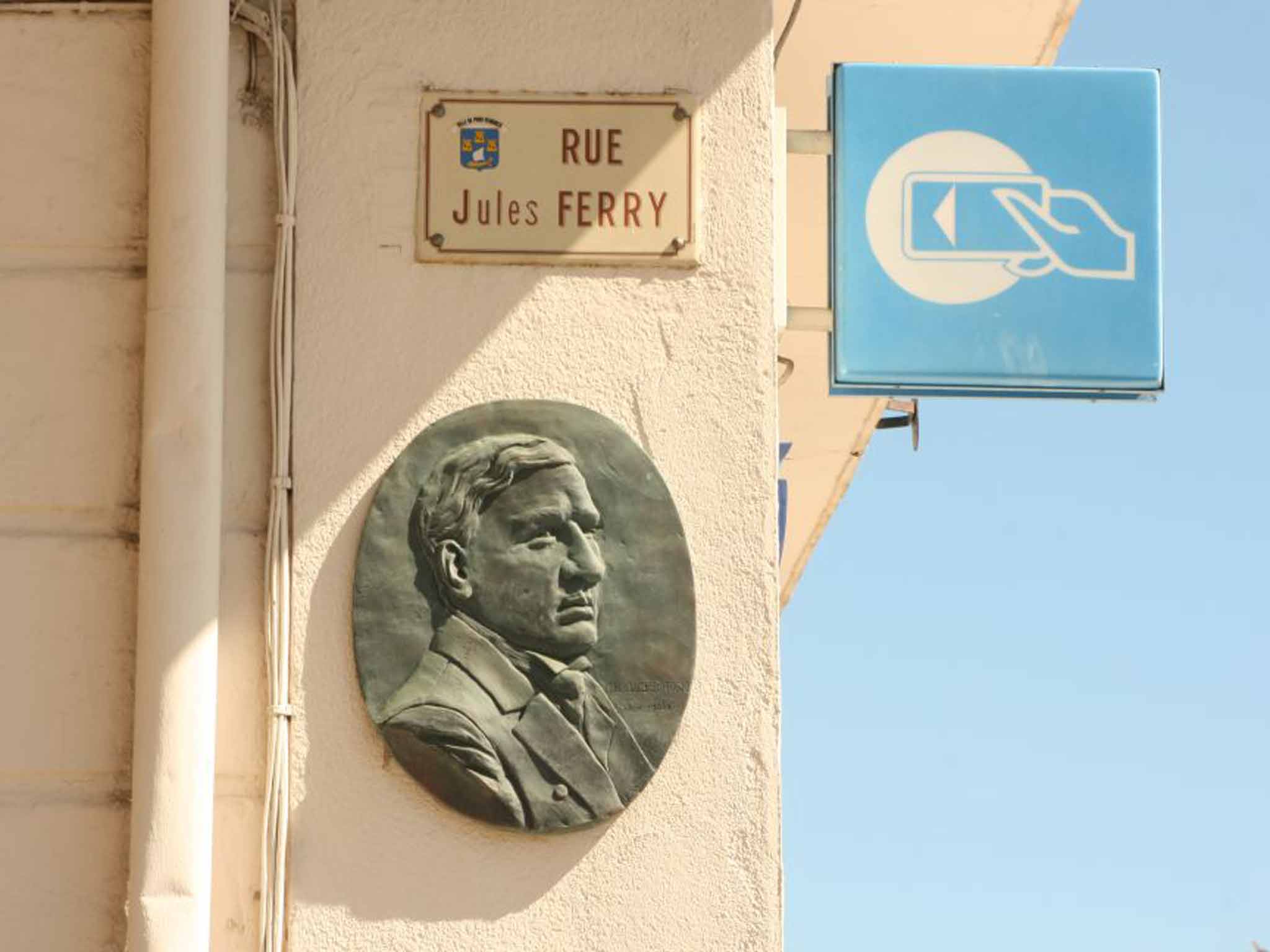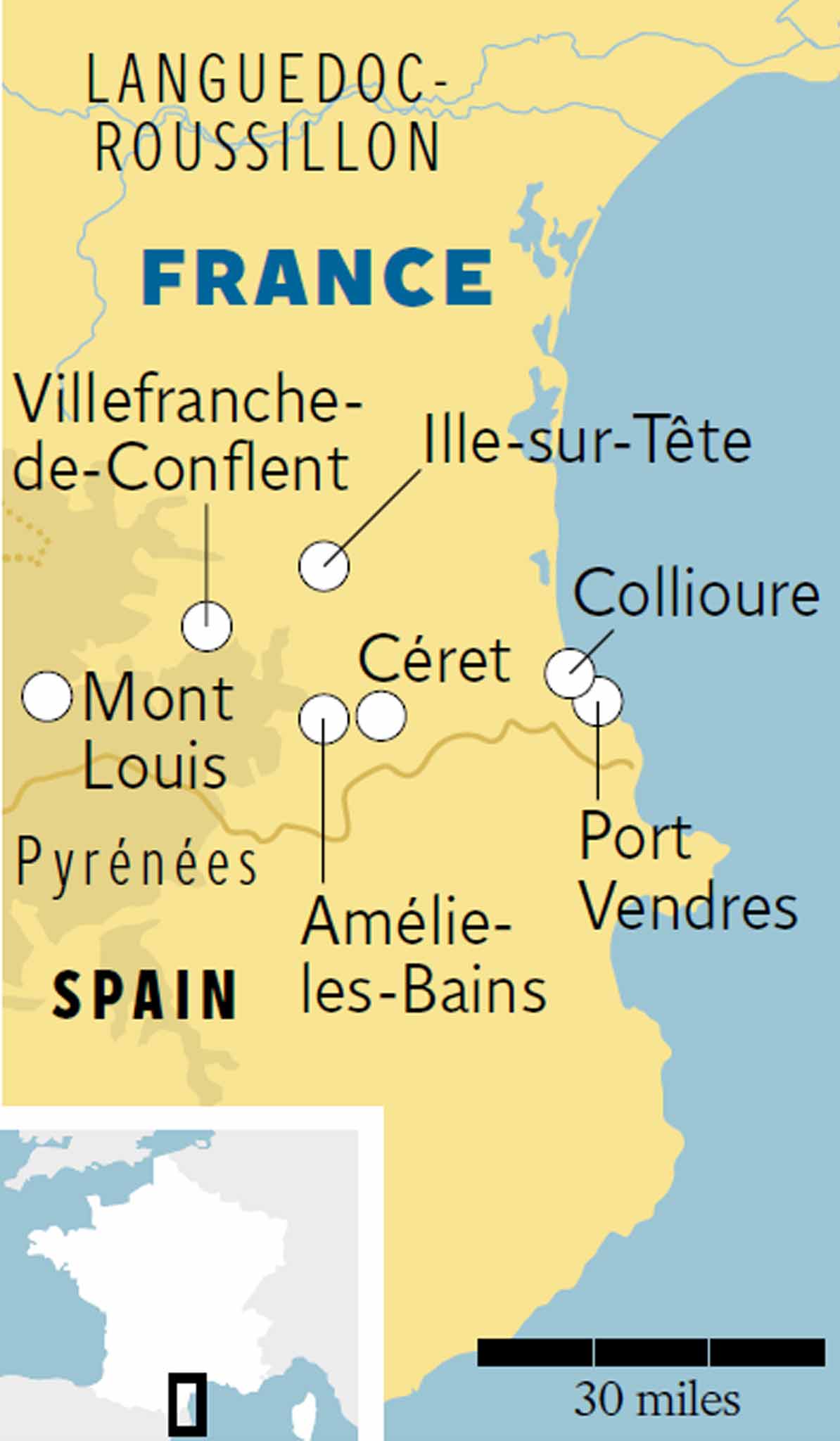On the trail of Charles Rennie Mackintosh in Languedoc-Roussillon
The artist is linked with Glasgow, but it was a region in France that stole his heart, says Gavin Bell

Your support helps us to tell the story
From reproductive rights to climate change to Big Tech, The Independent is on the ground when the story is developing. Whether it's investigating the financials of Elon Musk's pro-Trump PAC or producing our latest documentary, 'The A Word', which shines a light on the American women fighting for reproductive rights, we know how important it is to parse out the facts from the messaging.
At such a critical moment in US history, we need reporters on the ground. Your donation allows us to keep sending journalists to speak to both sides of the story.
The Independent is trusted by Americans across the entire political spectrum. And unlike many other quality news outlets, we choose not to lock Americans out of our reporting and analysis with paywalls. We believe quality journalism should be available to everyone, paid for by those who can afford it.
Your support makes all the difference.The framed print stands on a quayside, where the artist painted the original watercolour. Across a small bay his subject rises with solemn grandeur, a stronghold of the Knights Templar transformed in the 14th century by the Kings of Majorca into a magnificent summer palace.
It was in the summer of 1924 that the Scottish architect and artist Charles Rennie Mackintosh painted The Summer Palace of the Queens of Aragon in Collioure, a small fishing village in southern France, near the Spanish border. He and his equally creative wife, Margaret, had abandoned a winter of discontent in foggy London for the sunshine and warmth of Roussillon, where they spent his final years wandering between the Vermilion coast and river valleys snaking into the high Pyrenees.
Almost a century later, their travels have been way-marked with reproductions of 30 of Mackintosh watercolours in situ where they were painted, interspersed by interpretation centres. It is a trail through time and space, from fortified medieval villages to a place Mackintosh called “fairyland”.
Margaret wrote that Collioure, framed by a jumble of wooded hills and terraced vineyards, was “one of the most wonderful places we have ever seen”. It was already an artists' colony, where Matisse and Derain had shocked the Parisian art world with vivid expressionism that became known as Fauvism.
The picture postcard village that attracted artists inevitably drew tourists, and today its narrow cobbled streets and lanes are lined with galleries and restaurants. A glimpse of the past survives in Les Templiers, a lounge bar that was the hub of the artistic community in the 1920s, when it was the Café des Sports. A starboard navigation light hangs from its bar, shaped like a fishing boat, and its walls are still crammed with paintings donated by artists in lieu of payment.

The Royal Palace is another time machine, with a warren of chambers, passages and battlements transporting visitors to an age of courtly society and clash of arms. When Louis XIII's troops took it from the Spanish in 1642, their ranks included a musketeer by the name of d'Artagnan.
Amélie-les-Bains was generally more peaceful. This was where the Mackintoshes first arrived from London, and they could not have chosen a more blissful contrast. A thermal spa town in the foothills of the Pyrenees, dating back to Roman times, it has healing waters and miles of walking trails through woods of oak, chestnut and pine. The ambience is relaxed; a haven for couples enjoying spa treatments and aperitifs in pavement cafés.
In a hamlet above the town, a fine little exhibition of Mackintosh's work is displayed in the annex of a 10th-century church. Reproductions of his watercolours feature with distinctive Art Nouveau furniture, videos of his early life in Glasgow, and his designs for splendid concert halls that were never built. Outside, the peace of the mountains pervades a cluster of old stone houses and quiet lanes, disturbed only by birdsong.

En route to Amélie, the Mackintoshes stopped at Céret, a town with a medieval heart that a decade earlier had been the epicentre of Cubism. Works by Picasso, Herbin and Kremegne hang in its fine Museum of Modern Art, and the Brasserie de France, across the street where the painters drank and debated, still serves good food and wine beneath enormous plane trees.

The deeper they ventured into the eastern Pyrenees, the more enchanted Mackintosh and his wife became. Their next discovery was the valley of the River Têt, where they checked into a hotel in Ille-sur-Tête, a market town in a fruit-growing area, and decided to stay for good in what Margaret called “this lovely, rose-coloured land”. This is where one of Mackintosh's reproductions stands where he painted it, of monumental pillars of rock.
There are no fewer than five villages in and around the beautiful Tête valley. One of them is Villefranche-de-Conflent, a Unesco-listed medieval walled town that looks like a set for a swashbuckling film. This is because it has preserved fortifications designed by Vauban, the great military engineer of Louis XIV. Wandering its cobbled lanes at dusk, when most visitors have gone, one half expects to hear the clash of swords and see d'Artagnan and his carousing musketeers emerge from the shadows.
A grim mountain fortress perched above it once imprisoned ladies who had fallen out of favour at Louis XIV's court, and is now the unlikely setting of a small exhibition of Mackintosh reproductions and furniture. It was from here that the Mackintoshes travelled on one of the world's great little railways to the roof of the Pyrenees. The Petit Train Jaune (Little Yellow Train) still runs daily with most of its original carriages on a narrow gauge electric line to one of the highest stations in France at Bolquère Eyne (5,226ft), and beyond to the Spanish border.
It is not an express train. It takes an hour and a half to trundle barely 20 miles through chasms, over ravines and through tunnels to another Vauban citadel on a high plateau ringed by mountain peaks. This is fine with its passengers, who are there for the journey rather than any pressing need to get anywhere. Sitting on a wooden bench in one of the open-air carriages is like a fairground ride on a toy train that bravely climbs mountains. It is great fun, and it goes to fairyland. This is what Mackintosh called the highlands, around the fortified village of Mont-Louis, which became a favourite summer haunt. In spring and early summer, the plateau is ablaze with mountain wild flowers, which he and his wife collected for him to portray in exquisite watercolours.
The Mackintoshes eventually returned to the coast, and took up residence near Collioure in a hotel in Port-Vendres, then bustling with cargo ships and ferries to French North Africa. One of Mackintosh's favourite spots for painting was a green, rocky headland where a footpath winds by an 18th-century fort to a bay framed by a breakwater and a lighthouse. Several of his framed reproduction prints placed in situ in Port-Vendres have gone with the wind, or with souvenir hunters, but the views remain the same.
Getting there
The closest airport is Perpignan, served by Ryanair (0871 246 0000; ryanair.com) from Stansted and Birmingham, and by Flybe (0371 700 2000; flybe.com) from Southampton.
Staying there
Appart'Hotel Castel Emeraude, Amélie-les-Bains (00 33 468 88 34 89; castelemeraude.fr). Doubles from €29, room only. Mas St Joseph, Ille-sur-Tête (00 33 468 67 85 62; bit.ly/MasStJoseph). Doubles from €80 B&B. Hôtel Les Caranques, Collioure (00 33 468 82 06 68; hotel-les-caranques.fr). Doubles from €110, room only.
More information
Join our commenting forum
Join thought-provoking conversations, follow other Independent readers and see their replies
Comments